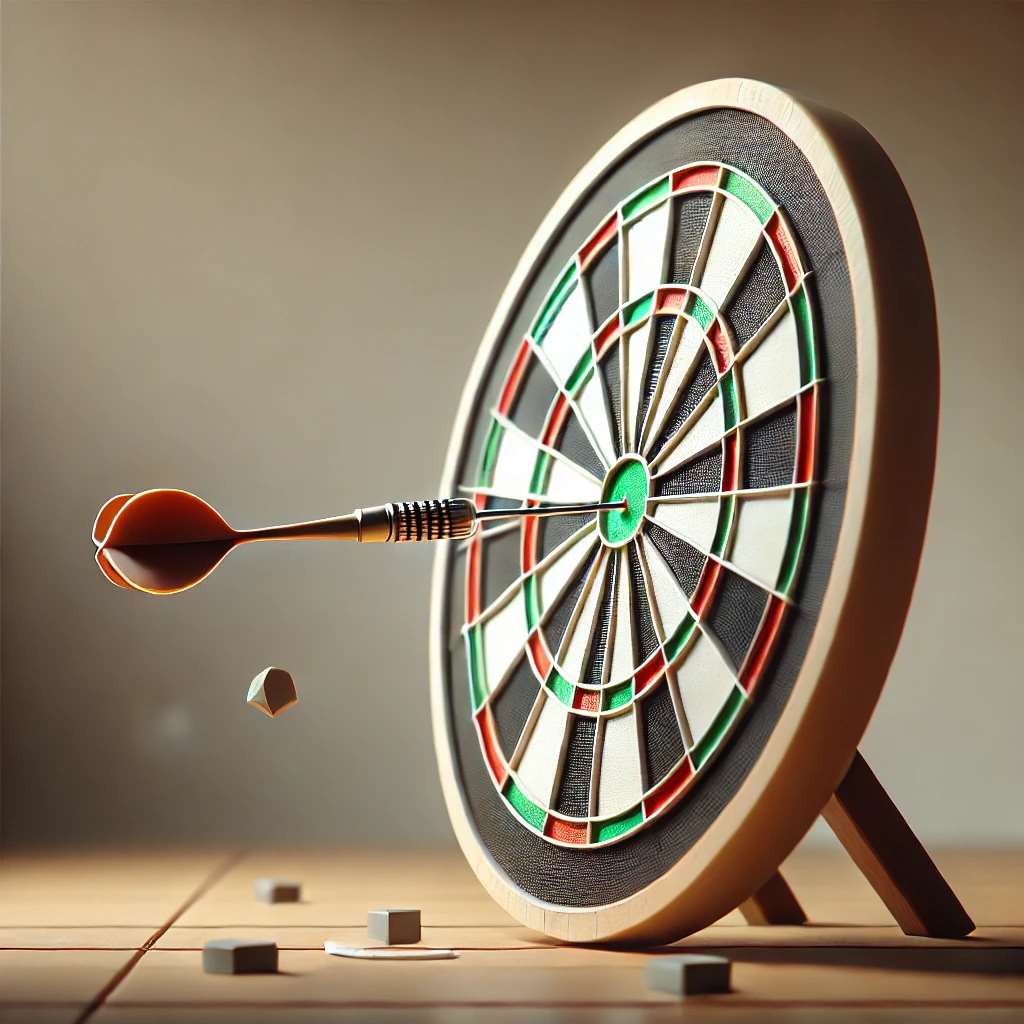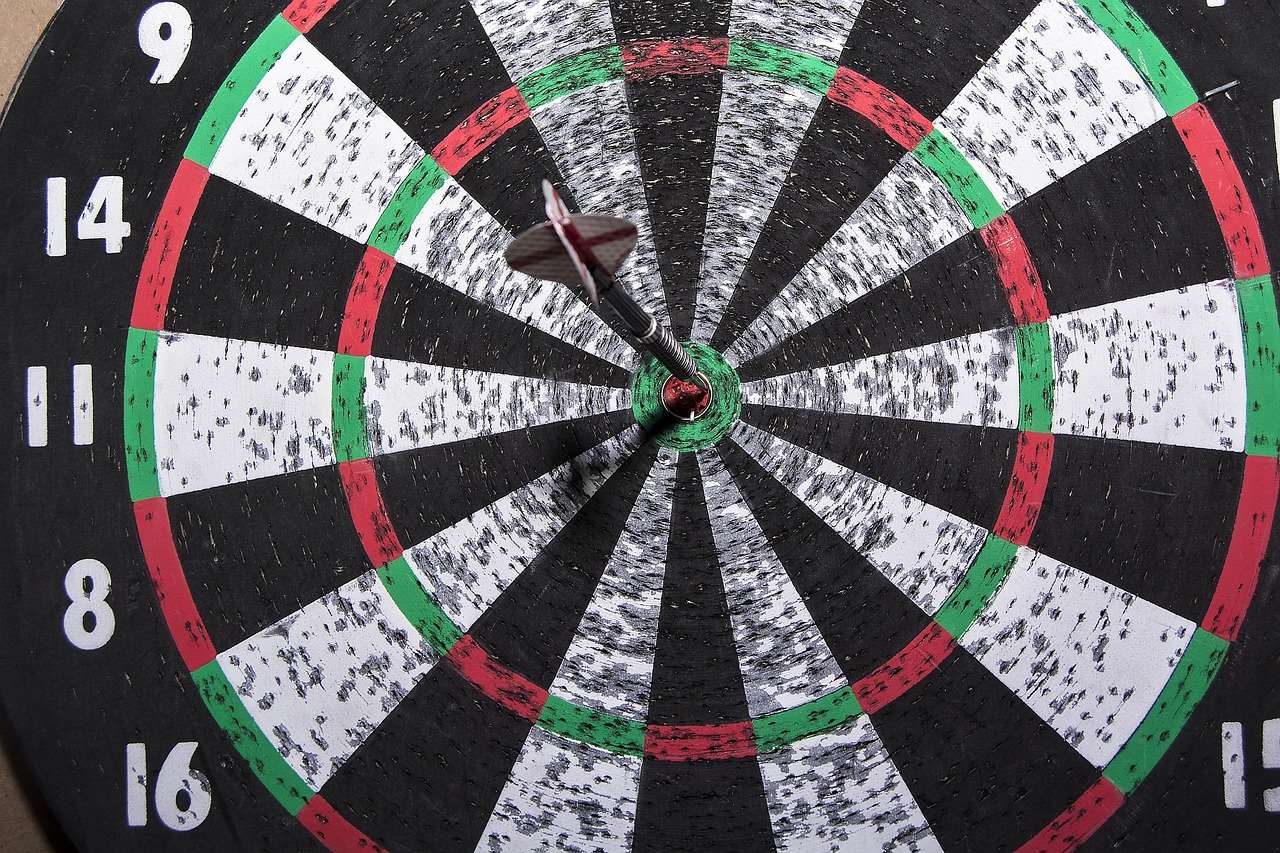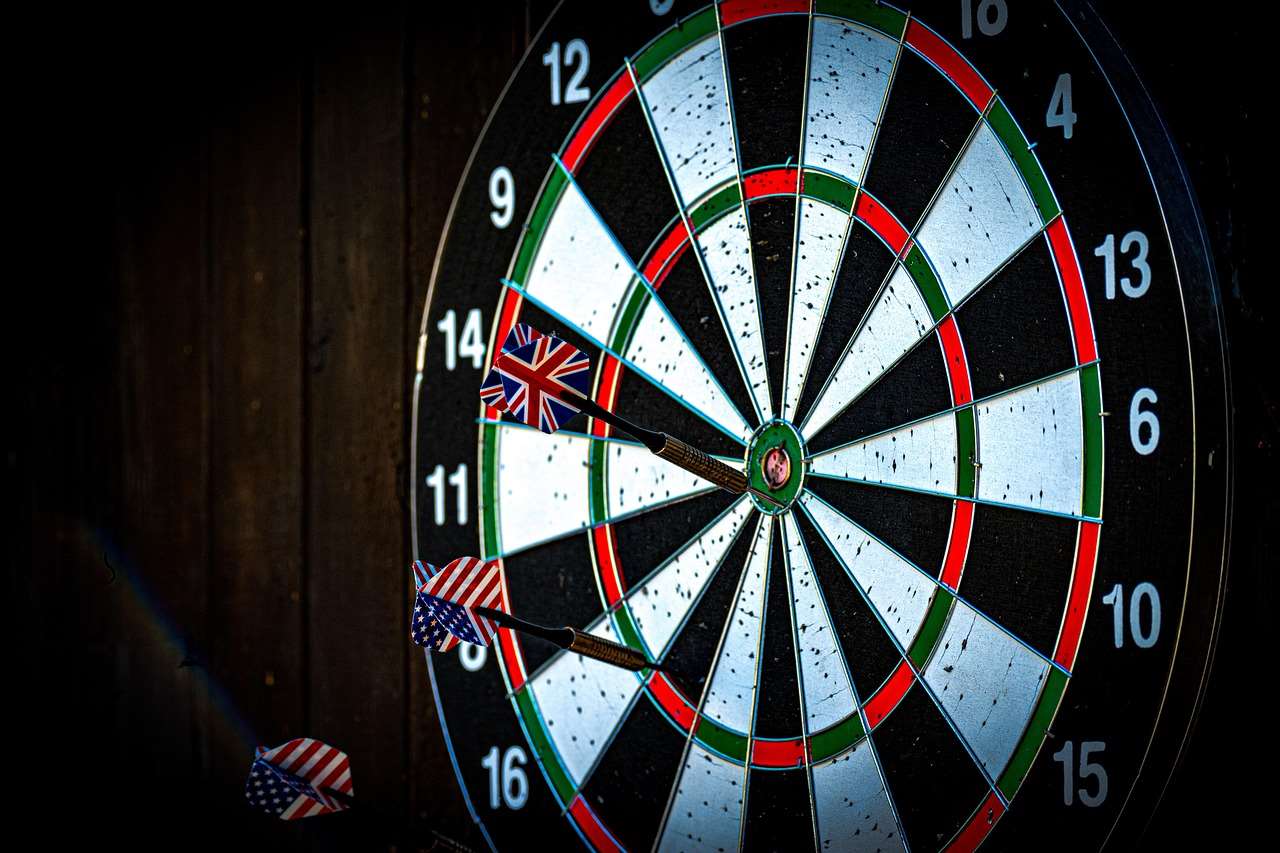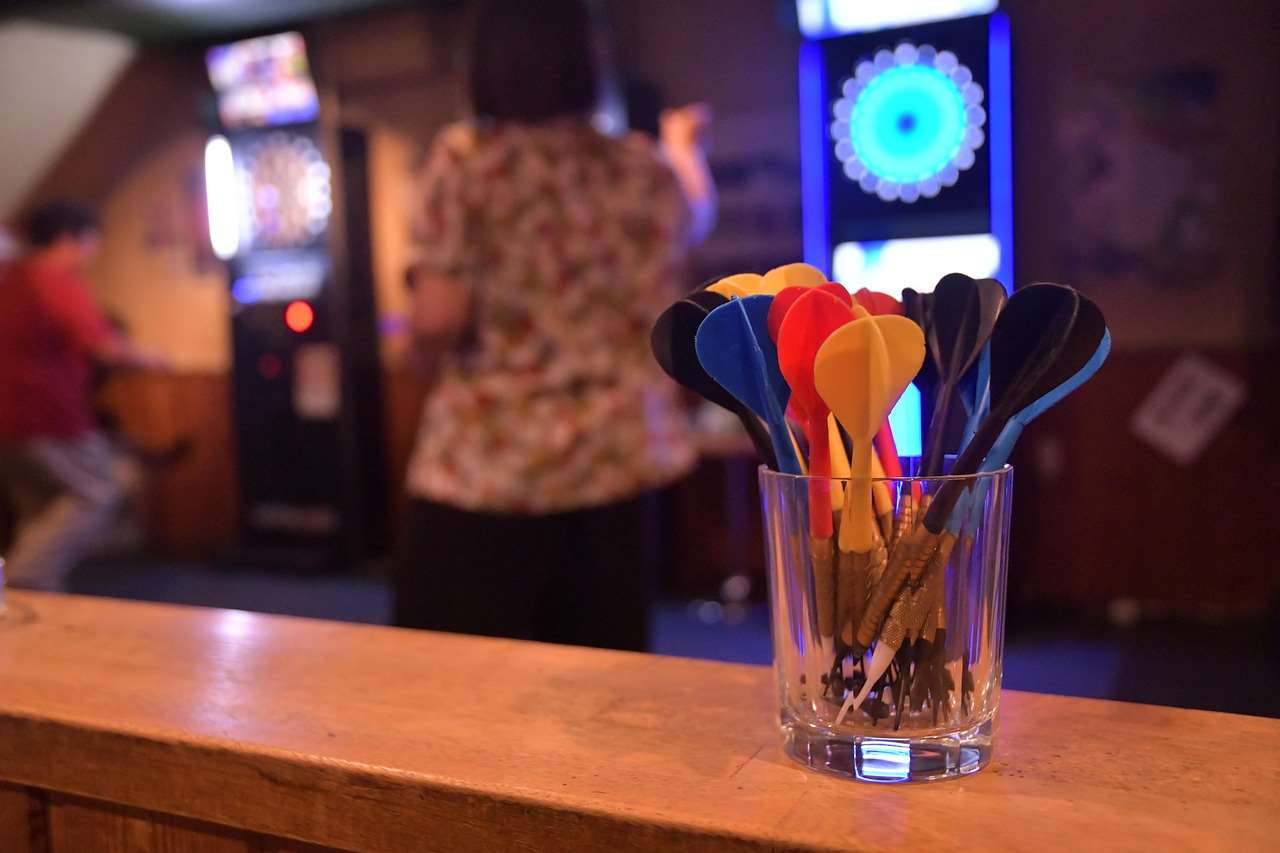Understanding pub darts prize money distribution is key to knowing where your entry fees go and how winnings are allocated. This article breaks down the typical prize structures in pub darts, from local leagues to knockout tournaments, explaining percentages, variations, and factors that influence payouts. You’ll also learn tips for maximizing your winnings and understanding the financial side of playing darts.
⚠️ Still Using Pen & Paper (or a Chalkboard)?! ⚠️
Step into the future! The Dart Counter App handles all the scoring, suggests checkouts, and tracks your stats automatically. It's easier than you think!
Try the Smart Dart Counter App FREE!Ready for an upgrade? Click above!
Understanding the Basics of Pub Darts Prize Money Distribution
The allure of pub darts isn’t just about the thrill of hitting a 180; it’s also about the potential prize money. Understanding how that money is distributed can help you manage your expectations and appreciate the nuances of different competitions. The distribution is rarely uniform and can depend on factors like entry fees, the number of participants, and the specific rules of the tournament or league.
Generally, a percentage of the collected entry fees is allocated to the prize pool. The specific percentage varies, but it often ranges from 70% to 90%, with the remainder covering administrative costs or contributing to the venue. For example, a league with £5 entry fees and 20 participants could generate a prize pool of £70-£90, assuming 70-90% distribution. The total prize pool is then divided among the top-performing players or teams.
Typical Prize Structures
The structure of prize money distribution typically follows a top-heavy approach, where the winner receives the largest share, followed by decreasing amounts for subsequent placings. Here are some common scenarios:
- Winner-takes-all: In smaller, less formal tournaments, the entire prize pool might go to the winner.
- Top-three split: The prize pool is divided among the top three players or teams, often with a 50/30/20 or 60/30/10 split.
- Graded payouts: Larger tournaments might offer payouts for the top four, eight, or even sixteen players/teams, with progressively smaller amounts for lower placings.

It’s essential to clarify the prize structure before entering a competition. Knowing how the money is distributed allows you to gauge whether the risk and reward align with your goals.
Factors Influencing Prize Money Distribution
Several factors influence how prize money is allocated in pub darts competitions. These can range from the scale of the event to the governing rules. Understanding these variables can help you anticipate potential payouts and make informed decisions about which tournaments to enter. Knowing more about Darts Culture And Community Guide also gives perspective.
Size and Format of the Tournament
Larger tournaments with more entrants generally offer larger prize pools and more diverse payout structures. A local pub league might have a modest prize pool distributed among the top three teams, while a regional competition could offer payouts to the top eight or sixteen players. The format of the tournament also plays a role. Knockout tournaments tend to have more concentrated prize distribution, whereas league formats might spread the winnings across multiple categories (e.g., highest checkout, most 180s, etc.).
Entry Fees and Sponsorship
The size of the entry fee directly impacts the total prize pool. Higher entry fees typically result in larger payouts, but also attract more skilled players, increasing the competition. Sponsorship can also significantly boost the prize pool. If a local business sponsors a darts event, their contribution is often added to the prize money, making the competition more attractive to participants.
House Rules and Venue Contribution
The venue hosting the darts competition may also contribute to the prize pool or stipulate a certain percentage that is retained for house expenses. Understanding these “house rules” is crucial. Some venues might offer additional incentives, such as free drinks or food vouchers for top performers, which can add value beyond the cash prize.

Understanding the Percentages
Delving deeper into the percentages involved in pub darts prize money distribution can reveal valuable insights. It’s not just about the total prize pool; it’s about how that pool is divided and whether it represents a fair return on your investment.
Calculating Your Potential Return
Before entering a darts competition, take a moment to calculate your potential return. Consider the entry fee, the number of participants, and the announced prize structure. Estimate your chances of winning and determine whether the potential payout justifies the cost and effort. This simple calculation can help you make rational decisions rather than being swayed by the allure of a large prize pool that is unlikely to be within your reach. What can you expect at live darts matches and competitions? This will help inform your decisions.
Common Prize Distribution Models
While the exact percentages vary, some common models exist for distributing prize money:
- 50/30/20: Winner receives 50%, second place 30%, and third place 20%.
- 60/30/10: Winner receives 60%, second place 30%, and third place 10%.
- 70/20/10: Winner receives 70%, second place 20%, and third place 10%.
- Winner-takes-all: 100% to the winner.
More complex models might involve a sliding scale where each subsequent placing receives a smaller percentage. Always clarify the specific model before participating.
Transparency and Fairness
Transparency is key to ensuring fairness in prize money distribution. The organizers should clearly communicate the percentage allocated to the prize pool, the breakdown of payouts for each placing, and any deductions for administrative costs or venue contributions. If this information is not readily available, don’t hesitate to ask. A fair and transparent system fosters trust and encourages participation.

Tips for Maximizing Your Winnings
While skill and practice are paramount, there are also strategic steps you can take to maximize your potential winnings in pub darts prize money distribution scenarios.
Choosing the Right Competitions
Not all darts competitions are created equal. Some offer better value for your entry fee than others. Consider the level of competition, the prize structure, and the number of participants. Smaller tournaments with fewer skilled players might offer a higher chance of winning, even if the prize pool is smaller. Conversely, larger tournaments with substantial prize money might attract a higher caliber of players, making it more challenging to reach the top spots. Select competitions that align with your skill level and goals.
Negotiating Prize Splits (Where Possible)
In some informal settings, particularly towards the end of a long tournament, it may be possible to negotiate a prize split with your remaining opponents. If you’re exhausted or facing a significantly stronger player, agreeing to a split can guarantee a certain payout without risking everything on a single match. This requires tact and diplomacy, but it can be a worthwhile strategy.
Improving Your Darts Skills
The most direct route to increasing your winnings is to improve your darts skills. Consistent practice, focused training, and analyzing your performance can lead to significant improvements over time. Consider joining a local darts club, seeking coaching from experienced players, or using online resources to refine your technique and strategy.
Also, consider honing your fan culture at live darts knowledge to fit in and better enjoy the events.

Legalities and Tax Implications
While pub darts prize money might seem like small change, it’s important to be aware of the legalities and potential tax implications, especially if you’re consistently winning.
Reporting Your Winnings
In many jurisdictions, winnings from darts tournaments are considered taxable income. The specific rules and thresholds vary, so it’s essential to consult with a tax professional to understand your obligations. Keep accurate records of your winnings and expenses (e.g., entry fees, travel costs) to facilitate accurate reporting.
Understanding Gambling Laws
Darts tournaments are generally considered a form of skill-based competition rather than gambling. However, it’s important to be aware of the gambling laws in your region, particularly if the competition involves significant prize money or side bets. Ensure that the tournament organizers are operating within the legal framework.
Prize Money Distribution Agreements
For larger tournaments with complex prize money distribution models, it’s advisable to have a written agreement outlining the terms and conditions. This agreement should specify the percentage allocated to the prize pool, the breakdown of payouts for each placing, and any deductions for administrative costs or taxes. A clear agreement can prevent disputes and ensure that all participants are aware of their rights and obligations.

The Future of Pub Darts Prize Money
The landscape of pub darts prize money distribution is constantly evolving, influenced by factors like the growing popularity of the sport, increased sponsorship opportunities, and technological advancements.
Online Darts Platforms
The rise of online darts platforms has created new avenues for competition and prize money. These platforms often offer virtual tournaments with cash prizes, allowing players from around the world to compete remotely. While the prize pools might be smaller than in-person tournaments, the accessibility and convenience of online darts make it an attractive option for many players.
Increased Sponsorship and Investment
As darts continues to gain popularity, we can expect to see increased sponsorship and investment in the sport. This will likely translate into larger prize pools and more diverse payout structures in both professional and amateur competitions. The involvement of major brands can elevate the profile of darts and attract more participants and spectators.
Technological Innovations
Technological innovations, such as automated scoring systems and online streaming, are transforming the darts experience. These advancements can enhance the fairness and transparency of tournaments, as well as increase their visibility and appeal to a wider audience. As technology continues to evolve, we can expect to see further innovations in pub darts prize money distribution, such as blockchain-based payout systems and crowdfunding for prize pools.
Conclusion
Understanding Pub Darts Prize Money Distribution is crucial for any darts enthusiast, whether a casual player or a seasoned competitor. By knowing the factors influencing payouts, common prize structures, and legal considerations, you can make informed decisions, maximize your potential winnings, and fully appreciate the financial side of the game. Remember to always clarify the prize structure before entering a competition and to practice responsible financial management. Now, armed with this knowledge, step up to the oche and aim for that bullseye – both on the board and in your wallet! Consider attending some events by getting tickets for darts events.
Hi, I’m Dieter, and I created Dartcounter (Dartcounterapp.com). My motivation wasn’t being a darts expert – quite the opposite! When I first started playing, I loved the game but found keeping accurate scores and tracking stats difficult and distracting.
I figured I couldn’t be the only one struggling with this. So, I decided to build a solution: an easy-to-use application that everyone, no matter their experience level, could use to manage scoring effortlessly.
My goal for Dartcounter was simple: let the app handle the numbers – the scoring, the averages, the stats, even checkout suggestions – so players could focus purely on their throw and enjoying the game. It began as a way to solve my own beginner’s problem, and I’m thrilled it has grown into a helpful tool for the wider darts community.